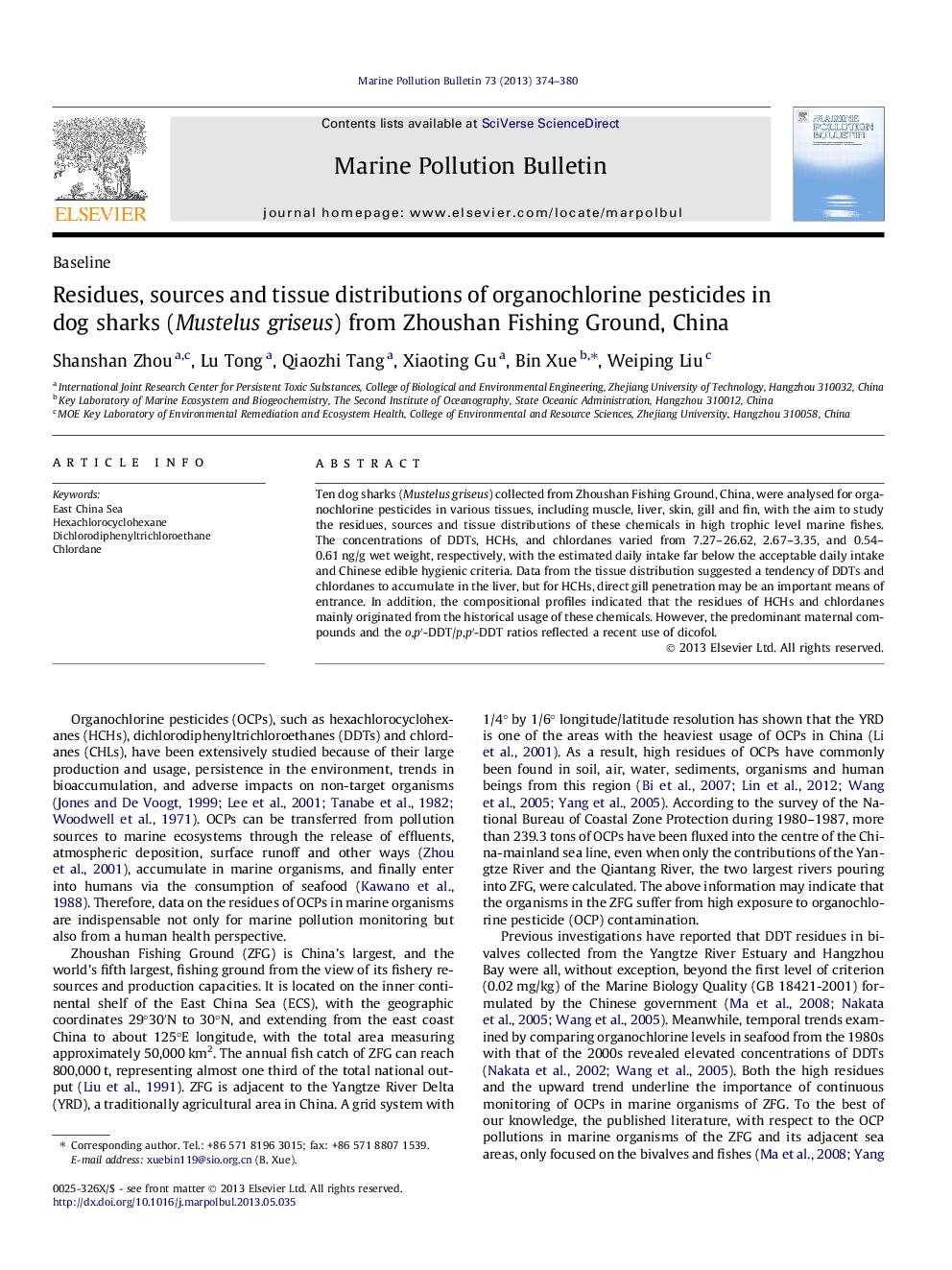| کد مقاله | کد نشریه | سال انتشار | مقاله انگلیسی | نسخه تمام متن |
|---|---|---|---|---|
| 6359485 | 1315639 | 2013 | 7 صفحه PDF | دانلود رایگان |

- The residues of organochlorine pesticides in dog sharks were 10.75-30.35Â ng/g.
- DDTs and chlordanes has a tendency to accumulate in the liver.
- Direct gill penetration may be an important means of entrance for HCHs.
- The compositional profiles suggest historical usage of HCHs and chlordanes.
- The predominant o,pâ²-DDT/p,pâ²-DDT ratios reflected a recent use of dicofol.
Ten dog sharks (Mustelus griseus) collected from Zhoushan Fishing Ground, China, were analysed for organochlorine pesticides in various tissues, including muscle, liver, skin, gill and fin, with the aim to study the residues, sources and tissue distributions of these chemicals in high trophic level marine fishes. The concentrations of DDTs, HCHs, and chlordanes varied from 7.27-26.62, 2.67-3.35, and 0.54-0.61Â ng/g wet weight, respectively, with the estimated daily intake far below the acceptable daily intake and Chinese edible hygienic criteria. Data from the tissue distribution suggested a tendency of DDTs and chlordanes to accumulate in the liver, but for HCHs, direct gill penetration may be an important means of entrance. In addition, the compositional profiles indicated that the residues of HCHs and chlordanes mainly originated from the historical usage of these chemicals. However, the predominant maternal compounds and the o,pâ²-DDT/p,pâ²-DDT ratios reflected a recent use of dicofol.
Journal: Marine Pollution Bulletin - Volume 73, Issue 1, 15 August 2013, Pages 374-380